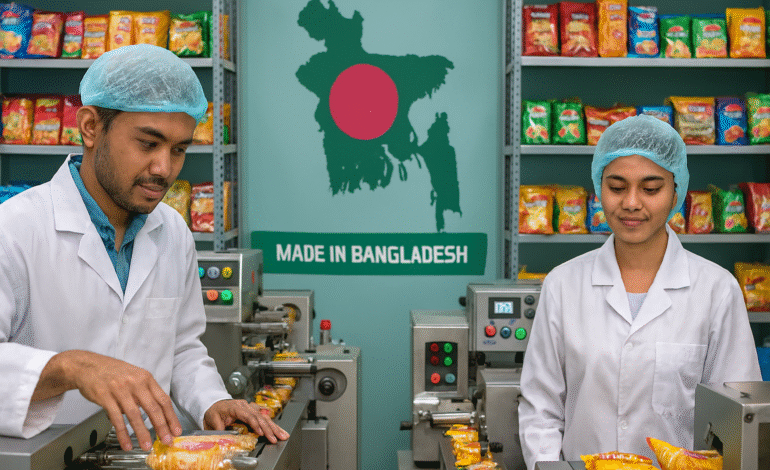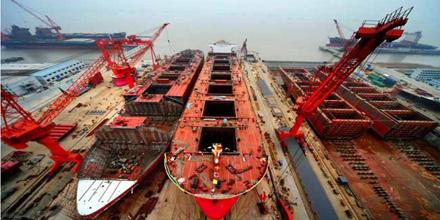Bangladesh’s Packaged Food Industry on a $5.8 Billion Growth Path by 2030

Bangladesh’s Packaged Food Industry on a $5.8 Billion Growth Path by 2030
Bangladesh’s packaged food industry is undergoing a remarkable transformation, positioning itself as one of the fastest-growing sectors in South Asia. According to Khondaker Golam Moazzem, Research Director at the Centre for Policy Dialogue (CPD), the industry is projected to reach $5.8 billion by 2030, up from $4.8 billion in 2024. Speaking at a workshop on agro-processing in Dhaka’s Gulshan, Moazzem highlighted that the market’s growth is being fueled by rising urbanization, changing lifestyles, and increasing consumer preference for ready-to-eat and processed foods.
Nearly 40% of Bangladesh’s population now lives in urban areas, where busy schedules and dual-income households have reshaped dietary habits. From biscuits and noodles to frozen parathas, juices, and snacks, demand for branded, hygienic products is climbing steadily. Moazzem described the sector’s evolution as akin to a “tadpole turning into a frog”—symbolizing its leap from small, family-run operations to large-scale, export-oriented enterprises.
The Shift from Traditional to Modern Food Consumption
The rise of Bangladesh’s packaged food industry reflects broader global trends where convenience and quality dominate consumer decisions. As the country’s middle class expands and disposable incomes rise, purchasing patterns are shifting from bulk, unbranded goods to value-added packaged products.
This change is especially visible among younger consumers who seek quick, healthy, and affordable food options. The growing number of supermarkets, e-commerce platforms, and food delivery services has also made branded products more accessible. The transformation aligns with global urban consumption patterns observed in emerging economies such as Vietnam, Indonesia, and India, where agro-processing and packaging are key drivers of economic diversification.
Export Momentum and Global Market Integration
Bangladesh’s packaged food sector is not just growing domestically—it is increasingly making its mark on the international market. With brands like Pran-RFL, ACI Foods, and Square leading the charge, Bangladeshi processed foods are now exported to over 140 countries, including the Middle East, Europe, and North America.
In the 2024–2025 fiscal year, the foreign direct investment (FDI) in food processing reached $379 million, led primarily by Dutch investors. This international interest highlights the country’s emerging potential as a regional manufacturing and export hub. Bangladesh’s competitive labor costs, strong agricultural base, and improving logistics are attracting global players seeking sustainable and cost-efficient production locations.
As Bangladesh prepares to graduate from the Least Developed Country (LDC) category, analysts say this milestone will bring both opportunities and challenges. The government will need to shift from providing cash incentives to supporting innovation, certification, and research and development (R&D) to meet international standards and remain competitive in global markets.
Challenges Hindering Sector Growth
Despite impressive progress, the industry faces several challenges that could limit its full potential. Experts identify key obstacles such as:
Cold chain and logistics gaps: Limited storage and transportation infrastructure for perishable goods reduce efficiency and shelf life.
High interest rates: Expensive financing restricts investment in modern technologies and expansion projects.
Regulatory red tape: Lengthy bureaucratic processes slow down licensing, certification, and export approvals.
To overcome these hurdles, experts urge policy reforms and private-public collaboration to build a more resilient value chain. Investments in cold storage, digital logistics, and green packaging are also essential for meeting export standards and reducing post-harvest losses.
The Role of Innovation and Local Sourcing
Industry leaders are optimistic about the future, pointing to innovation and local sourcing as key strengths of Bangladesh’s agro-processing ecosystem. Kamruzzaman Kamal, Director of Marketing at Pran-RFL Group, emphasized that much of the company’s success stems from sourcing raw materials locally, which supports farmers and ensures quality control.
This integration between agriculture and industry demonstrates how Bangladesh can sustain growth while maintaining food security and promoting rural employment. The sector’s emphasis on value addition—such as turning raw fruits, grains, and dairy into packaged products—also creates opportunities for small and medium enterprises (SMEs) and women entrepreneurs.
A Model for Sustainable Agro-Industrial Growth
Bangladesh’s rise in the packaged food industry carries global significance. The country’s ability to combine agricultural strength with modern food processing reflects a broader global shift toward sustainable food systems. As climate change, food waste, and supply chain disruptions challenge global markets, Bangladesh offers lessons in resilience through innovation, local value chains, and export diversification.
Countries in Africa and South Asia facing similar demographic and developmental patterns can learn from Bangladesh’s model of transforming traditional agriculture into a high-value, globally connected industry.
The Role of Media and Policy Advocacy
Media also plays an increasingly vital role in promoting this transformation. The successes of agro-processing industries can inspire both policymakers and entrepreneurs. By amplifying stories of innovation and sustainability, the media helps attract investors and strengthen consumer confidence in “Made in Bangladesh” products.
Strategic communication and international branding will be crucial as Bangladesh competes in a global marketplace. Policies that encourage export certifications, digital marketing, and quality assurance can help position Bangladeshi packaged food as a trusted international brand.
Future Outlook: Toward a $5.8 Billion Market
With a clear growth trajectory and increasing investor interest, Bangladesh’s packaged food industry is set to become a cornerstone of the national economy. The combination of urban demand, export expansion, and technological advancement points toward a bright future.
If current trends continue, Bangladesh could soon join the ranks of leading agro-processing nations in Asia, contributing not only to economic growth but also to food security, employment, and sustainability.
As Moazzem and other experts have noted, the sector’s journey from a “tadpole to a frog” is far from over—it’s evolving into a thriving ecosystem that reflects Bangladesh’s transformation from a traditional agricultural nation to a modern, globally competitive economy.







